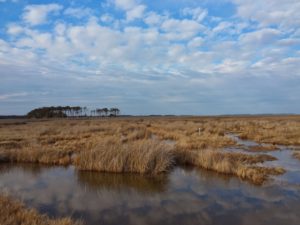We have much more to do and your continued support is needed now more than ever.
Marylanders Address Climate Solutions for Wildlife and Communities
This month the Maryland Climate Coalition kicked-off a six-stop “Clean Energy Roadshow” highlighting how Marylanders are taking action on cleaner, more energy efficient solutions at home, in our communities, and in Annapolis.

“The 2016 Maryland General Assembly session will be a crucial time to renew and strengthen Maryland’s response to climate change. Maryland’s landmark 2009 Greenhouse Gas Reduction Act is up for renewal in 2016, and expanding the state’s clean energy standard to 25 percent by 2020 will be before the General Assembly for consideration.” – Dana Stein, Maryland State Delegate, District 11 Baltimore County and member of Maryland’s Commission on Climate Change.

One of the top greenhouse gas emissions reducing programs in the plan is Maryland’s renewable portfolio standard. The standard sets requirements for Maryland to derive a certain amount of energy from renewables. Increasing the amount of clean, renewable energy that Maryland uses to 25% by 2020 will help Maryland meet its greenhouse gas emissions reduction goal and grow the state’s economy.
Transitioning to clean energy sources is one of the essential ways to protect people and wildlife from climate change pollution and its impacts, such as sea level rise and flooding.

In addition, increasing Maryland’s renewable portfolio standard would spur significant economic gains. The policy would create nearly 2,000 new jobs per year in the state’s solar industry and spur 4,600 new jobs in the regional wind-power economy. According to the Solar Energy Industries Association, Maryland’s solar industry already includes more than 170 companies and 3,000 jobs today.
“Increasing Maryland’s clean energy standard to 25 percent by 2020 means jobs for Maryland, including more public sector jobs, more manufacturing and constructions jobs. That is a big win for all of Maryland’s workers and for our communities.” – Adisa Muse, Maryland Working Families
Catch a stop on the roadshow, check out the remaining stops in November.





















